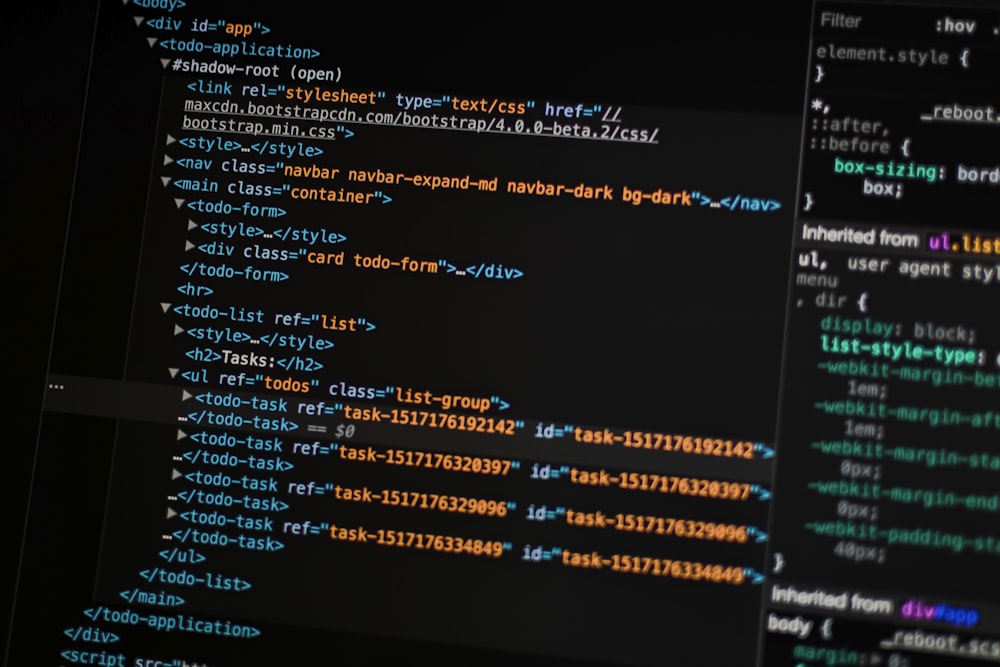Introduction to Front End Design

Image Source: Unsplash
As a front end developer, my job is to create visually appealing and user-friendly websites. Front end design is the process of creating the user interface of a website or web application. This includes designing the layout, typography, color scheme, and other visual elements that make up the appearance of the site. It is an essential part of web development that can greatly impact the user experience.
Importance of CSS in Front End Design
CSS (Cascading Style Sheets) is a styling language that is used to define the appearance of HTML elements. It is an essential component of front end design because it allows developers to control the layout, fonts, colors, and other visual elements of a website. Without CSS, websites would be plain and unappealing.
CSS provides a lot of flexibility in terms of design. It allows developers to create complex layouts, animations, and transitions that can greatly enhance the user experience. Additionally, CSS can be used to create responsive designs that adapt to different screen sizes, making websites accessible on mobile devices.
CSS Basics: Selectors, Properties, and Values
CSS consists of three main components: selectors, properties, and values. Selectors are used to target specific HTML elements, while properties and values are used to define the appearance of those elements.
Selectors can be based on the HTML element type, class, or ID. For example, the following CSS rule targets all paragraphs on a page:
css p { font-size: 16px; }
In this example, p is the selector, font-size is the property, and 16px is the value.
CSS has a wide range of properties and values that can be used to create different styles. Some common properties include color, background-color, border, font-size, and padding.
Advanced CSS Techniques: Flexbox, Grid, Animations, and Transitions
Flexbox and Grid are two advanced CSS techniques that are used to create complex layouts. Flexbox is a one-dimensional layout system that allows developers to align and distribute elements within a container. Grid is a two-dimensional layout system that allows developers to create complex grid structures.
Animations and transitions are used to create dynamic and interactive user interfaces. Animations are used to create moving elements, while transitions are used to animate changes in an element's style. CSS also supports keyframe animations, which allow developers to create complex animations with multiple steps.
Best Practices for CSS Optimization
CSS optimization is the process of reducing the file size of CSS files to improve website performance. There are several best practices that can be followed to optimize CSS:
- Use a minifier to compress the CSS file
- Combine multiple CSS files into one file
- Use CSS preprocessing tools like Sass or Less to write more efficient CSS
- Avoid using inline styles
- Use CSS sprites to reduce the number of HTTP requests
Job Description for Front End Developer
A front end developer is responsible for creating the user interface of a website or web application. They work closely with designers and back end developers to ensure that the website is visually appealing and functional. Front end developers use HTML, CSS, and JavaScript to create the front end of a website.
Essential Skills for Front End Developers
Front end developers need to have a solid understanding of HTML, CSS, and JavaScript. They should be able to write clean and efficient code and be familiar with front end frameworks like React, Angular, or Vue. Additionally, they should have experience with version control systems like Git and be comfortable working with design tools like Sketch or Photoshop.
Communication skills are also essential for front end developers. They need to be able to work collaboratively with designers and back end developers to ensure that the website is functioning as intended.
Differences Between Front End and Back End Development
Front end development focuses on the user interface of a website, while back end development focuses on the server-side of a website. Front end developers use HTML, CSS, and JavaScript to create the user-facing parts of a website, while back end developers use languages like PHP, Ruby, or Python to create the server-side logic.
Front end developers are responsible for ensuring that the website is visually appealing and user-friendly, while back end developers are responsible for ensuring that the website is functioning properly and can handle large amounts of traffic.
The Future of CSS and Front End Design
CSS is constantly evolving, and new features are being added all the time. Some of the latest developments in CSS include CSS Grid, which allows for more complex layouts, and CSS Variables, which allow for the creation of reusable variables.
The future of front end design is likely to be focused on creating more personalized and interactive user experiences. This may involve the use of technologies like artificial intelligence and virtual reality.
Conclusion
CSS is a powerful tool that front end developers can use to create stunning and functional websites. It allows for a lot of flexibility in terms of design and can greatly enhance the user experience. By following best practices for CSS optimization and staying up-to-date with the latest developments in CSS, front end developers can create websites that are both visually appealing and performant.
